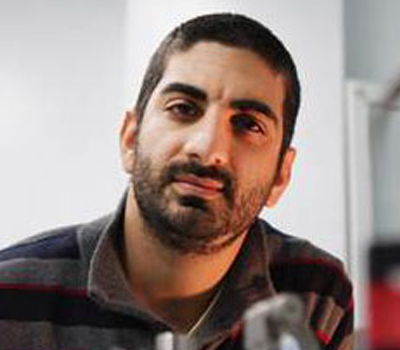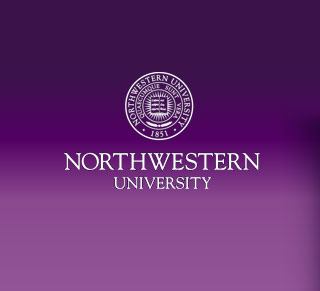Seeing molecules dance at the extremes of time, space, and energy
When we imagine individual molecules, it may come as a surprise that they are not static and in fact, the ways in which they move are completely unfamiliar to us. For instance, protein molecules "know" how to fold in ways that scientists do not yet understand. In some biological and chemical systems, energy moves through molecules at incredible speeds - far faster than it takes the atoms of the molecule to rearrange. Dr. Elad Harel, of Northwestern University, develops tools that allow one to see the molecular choreography of life. These tools peer into the quantum world in order to understand how to mimic, control, or disrupt molecules for tailored function. The applications of this research is far-reaching, from tracking the molecular origin of disease such as Alzheimer's to creating efficient solar cells for energy conversion technologies.
The impact of Dr. Harel's research is to inform the design of novel materials with unprecedented functionality. While his research is fundamental, it has far reaching consequences for controlling matter at the molecular length scale. The structures of atoms and molecules are well-understood, but how they function together to give rise to cooperative properties, that is, those in which the whole is greater than the sum of its parts, is not. The major bottleneck is the difficulty in seeing these processes directly and it is here that Dr. Harel's research is making an impact. Like the invention of the microscope that allowed scientists to peer into the microscopic world, Dr. Harel and his team are developing tools that allow scientists to see further than ever before, thereby making movies of molecules dancing inside of living cells or energy moving through semiconductor materials. With only a few young labs in the country developing these types of tools, Dr. Harel's approach is unique because he and his team are bridging many different areas of science to tackle problems at the forefront of the physical and biological sciences. In a time of restricted funding with narrow scope, big projects can be especially challenging. Despite these challenges, Dr. Harel has had incredible success in making these ideas into reality.
Current research includes:
-
Understanding Energy Flow in Proteins: Dr. Harel's research involves watching how energy moves through specialized proteins, such as those involved in photosynthesis, DNA repair, and vision. Some proteins are highly adapted to capturing light and making use of that energy to perform some useful function. These processes may occur on many timescales. Dr. Harel's lab focuses on the events that occur almost immediately after light absorption - ten millions of a billionth of a second. Using lasers that act as fast clocks allows Dr. Harel to probe these processes at extreme time and energy scales. Through the study of these proteins, his group aims to uncover novel design principles used by nature to make synthetic analogues that will break our reliance on fossil fuels.
-
A New Microscope: Dr. Harel is designing a new microscope that allows researchers to peer down at the molecular scale and watch molecules in real time. With this tool, scientists will be able to better understand how molecules interact in their crowded environments to perform specific functions. His research will have wide reaching implications in future technologies, health applications, and a fundamental understanding of chemistry and biology.
-
Mentorship: Dr. Harel believes his role as a mentor and educator is incredibly important. In addition to mentoring undergraduates, graduates, and postdocs, Dr. Harel and his lab also mentor high school students allowing them to get hands-on experience in his lab. Dr. Harel says that mentoring students is important because "in addition to mentoring your own students you are teaching them to mentor future generations of students."
Bio
Dr. Elad Harel was born in Israel, but moved to the Midwest at the age of four. His father, who is originally from Tunisia, and his mother, originally from Morocco, are both educators. His father, a mathematician, influenced him greatly and it is because of him that he pursued an academic track. While he felt a strong connection to mathematics, Dr. Harel fell in love with chemistry in high school where a wonderful teacher brought the subject to life. He decided to attend the University of California, San Diego for college where, coincidentally, his father later became a professor in the Mathematics Department. While at the University of California, San Diego, Dr. Harel had the opportunity to work in a research lab with Dr. Robert Continetti. That experience drew him into a research career, in particular physical chemistry, because of its mix of mathematics, chemistry, and engineering. Dr. Harel found that he enjoyed hands-on work, building experiments from scratch, analyzing data, understanding the theoretical underpinnings, and making contributions to the world of knowledge. This passion continued with him to graduate school at the University of California, Berkeley, where he worked for a leader in the field of magnetic resonance, Dr. Alex Pines. Dr. Pines guided him to be the scientist he is today - Dr. Pines told Dr. Harel that the most interesting problems are those too often dismissed as "impossible." Dr. Harel has always approached research from this point of view - a type of naivete that is incredibly useful in science, where it sometimes appears like everything has already been done! From Berkeley, Dr. Harel moved to the University of Chicago, switching fields to optics and working this time for a young researcher, Dr. Greg Engel. In Dr. Engel's lab, Dr. Harel learned to establish experiments from scratch, seeing them come full circle from conception to implementation. The problems Dr. Harel worked on dealt with uncovering rules that dictated how energy moves through molecules on the fastest time scales relevant to chemistry and biology. It is that deep desire to literally see the unseeable that drives his research today, where his own lab develops tools to examine molecules at the extremes of time, space, and energy.
In his free time, Dr. Harel enjoys photography, playing basketball and racquetball, and watching his favorite TV shows, True Detective and Breaking Bad.


